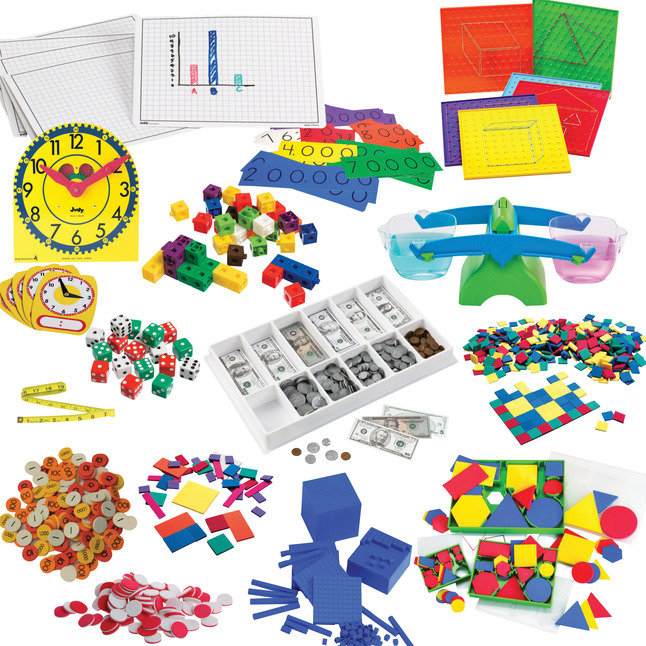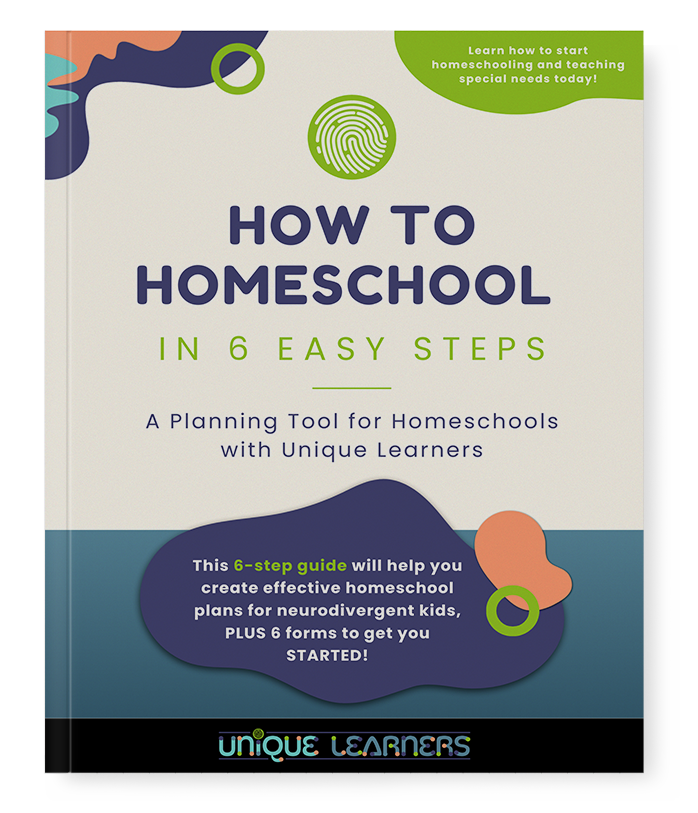Math manipulatives are important tools that help students understand and visualize mathematical concepts. Many teachers use them according to their curriculum, and may homeschoolers aren’t aware of why manipulatives are so essential for kids learning math.
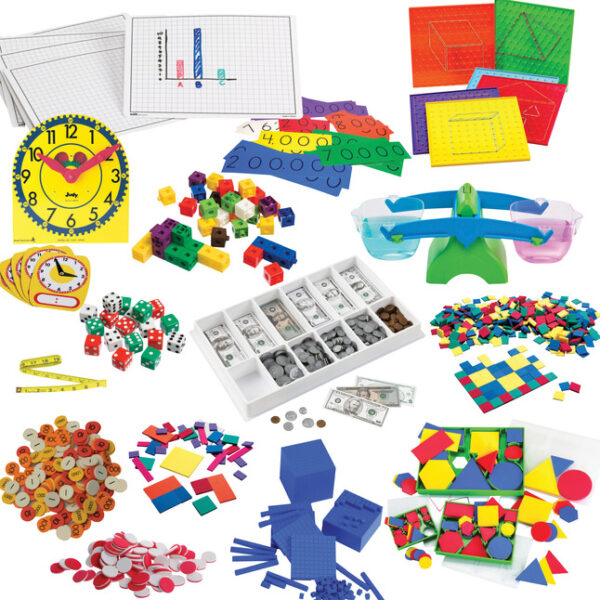
NOTE: This article may have some affiliate links.
Four Stages of Concept Development
Kids learn every concept in math through four stages: concrete, pictorial, semi-abstract, and abstract. Concrete is actual objects that kids can handle and manipulate to experience the math concept. Pictorial is often found in primary level workbooks by showing pictures of objects to put together or cross off. Semi-abstract is the next step of representing number values. Tally marks and dot numbers are examples of the semi-abstract stage. The abstract stage is simply numerals and equations or processes without scaffolded supports that reinforce the concepts being practiced.
Until children understand place value and the purpose of the four operations, manipulatives should always be available and encouraged. Even if all your child does is “play” with the manipulatives, math learning is happening. I frequently hear from homeschool moms that their kiddo is struggling in math. Most of the time, they are trying to have their children memorize facts with just number symbols without a firm grasp of the meaning behind the task.
What math manipulatives are worth investing in?
Here are the math manipulatives I have found are must haves and why:
Teddy Bear Counters.
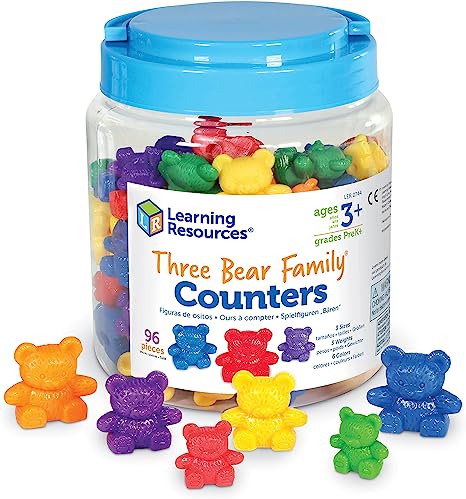
Teddy Bear Counters are a young learner’s first example of attributes. Attributes are characteristics of size, shape, color, thickness, and other descriptors. Teddy Bear Counters help with counting basic numbers to 20 and sorting. These skills are the precursor to addition and subtraction, as well as crossing over to adjectives in grammar and classification in science. You can expand on the concepts derived from Teddy Bear Counters by looking at objects around the house. Challenge your child to count things and describe the similiarities and differences.
Attribute Blocks.
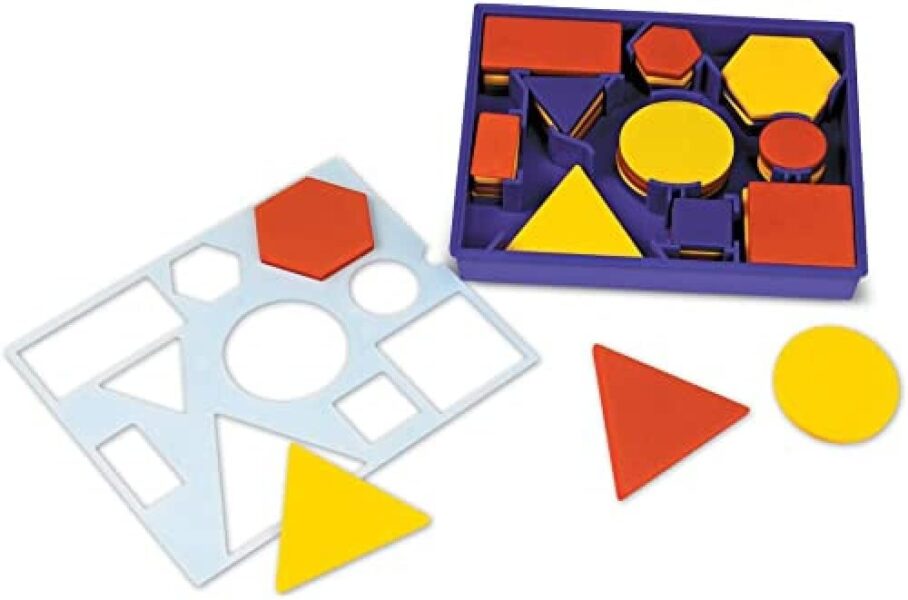
Attribute blocks look similar to Pattern Blocks, but their purpose is different (and perhaps more important) than Pattern Blocks. Attribute Blocks come in a variety of shapes, colors, sizes, and thicknesses. They are a more advanced form of Teddy Bear Counters. You can use Attribute Blocks with older students. Attribute Blocks are often used with Venn Diagram Circles to teach comparison, contrast, and logical thinking.
Base Ten Blocks.
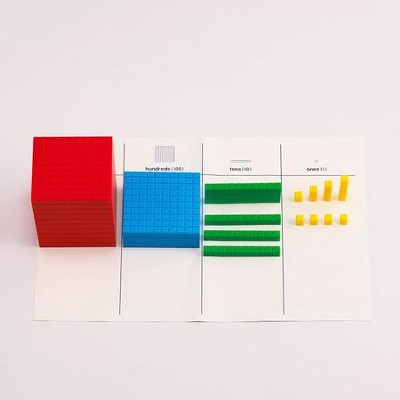
These color-coded Base Ten Place Value Blocks include units, rods, flats, and cubes, representing ones, tens, hundreds, and thousands respectively. Students can physically manipulate these blocks to understand place value, addition, subtraction, multiplication, and division. Base Ten Blocks are very important in experiencing the exchange from each place value column. The exchange process needs to involve putting together groups of 10 blocks and breaking apart blocks. This is a prerequisite skill to regrouping in adding and subtracting multiple digit calculation problems. Nearly every time a parent reports that their child is struggling with carrying and borrowing, the root problem is a lack of understanding place value and the 10 exchange between digits.
Abacus
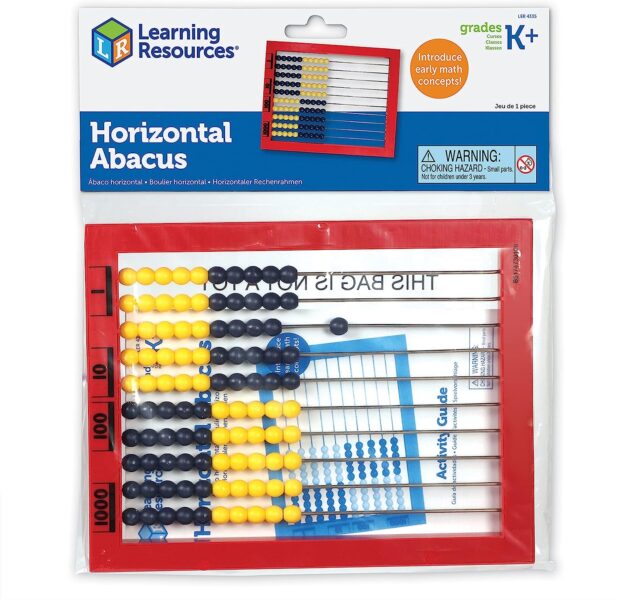
I use the 100 bead Abacus often recommended for math in primary grades. I also use a traditional Chinese that represents 5 and 10 exchanges and place value to the millions and beyond. For some of my students, I teach Chisanbop finger math as an extension of using an abacus.
Dot Numbers
Dot Numbers have a dot embedded into the numeral symbols. This is a semi-abstract concept stage that allows kids with memory issues to make the transition from concrete manipulatives to abstract math processes. I tend to teach nearly all of my students Dot Numbers because it improves fluency over using finger counting. I don’t stop my students who use their fingers, but when Dot Numbers has been presented as an alternative, they can do the counting needed to solve a calculation problem without putting down their pencil, which can keep them focused and efficient in math practice.
Pattern Blocks
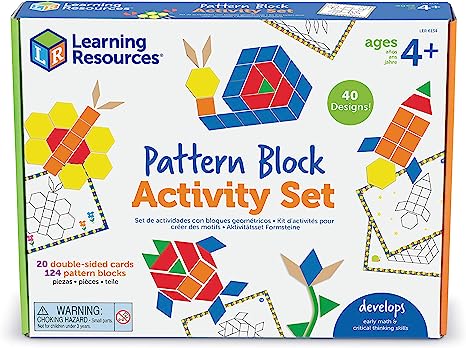
These geometric shapes, such as triangles, squares, and hexagons, allow students to explore patterns, symmetry, and spatial relationships. They also help in teaching fractions and geometry concepts. Pattern Blocks are based on the hexagon shape, so they tessellate. Tessellating means to create a repeating pattern, like designs in wallpaper. Pattern Cards are typically presented with a puzzle picture to replicate. For kids with special needs, the developmental sequence of working with pattern blocks is to build the picture on the puzzle page, then build the picture next to the puzzle page, then replicate linear patterns like AB, ABB, ABC, AAB, etc. Finishing linear patterns with Pattern Blocks prepares students for numeric sequences that will eventually lead them to multiplying groups and factoring in algebra. Pattern Blocks may seem like fun play, but the concepts they build are extremely valuable in helping the brain to process mathematics that will become more abstract in the upper grades.
Fraction Tiles, Squares, and Circles
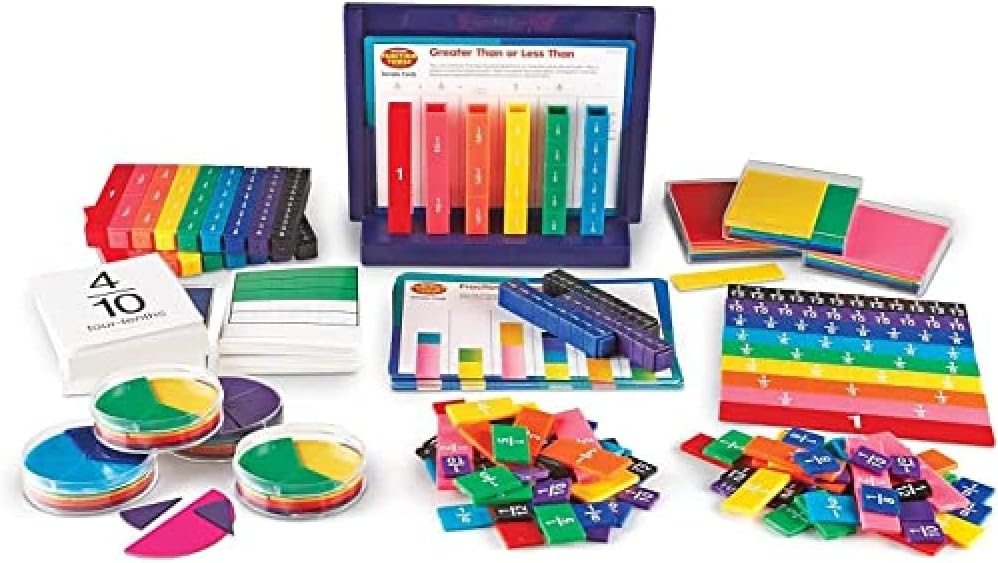
Fraction manipulatives help students to visually understand the concept of the part of a whole. Fraction Tiles help kids to see the relationships between how denominators help compare the size or value of fractions. Fraction Tiles also help us see equivalent fractions. Fraction Circles help kids learn how circle graphs work and generalize to real life math, like pizza and pies. I actually prefer Fraction Squares for demonstrating how unlike denominators can be converted to a common denominator for adding and subtracting fractions. I love the Rainbow Fraction manipulatives by Learning Resource because they make a consistent representation of the divisions in fractions. When it comes time to work on decimals and percents, the Learning Resource Rainbow Tower Cubes are interchangeable so that students can see the relationships of writing the same values in different formats.
Polyhedral Dice
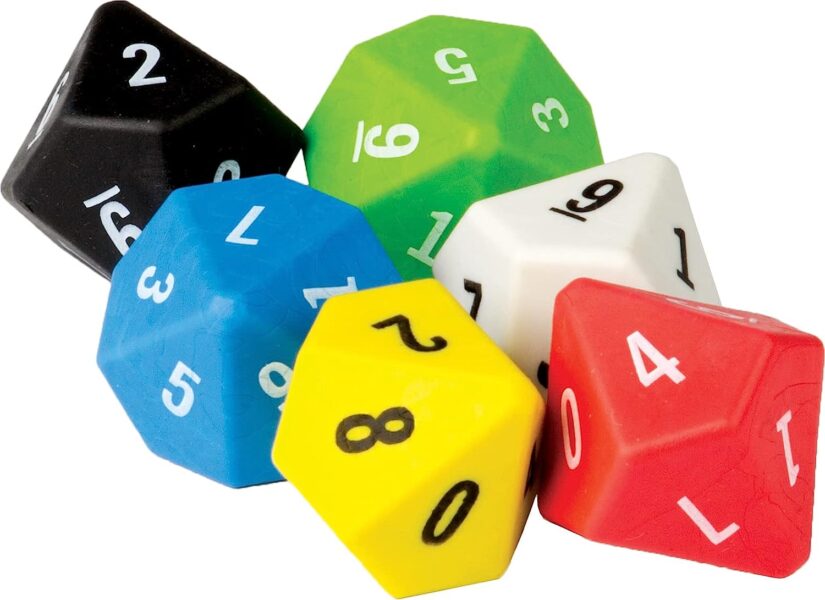
Dice can be used as math manipulatives for various activities. They help teach probability, addition, subtraction, multiplication, improper fractions. They are also useful for teaching concepts like greater than, less than, and equal to. Polyhedral Dice can be used as examples of 3-dimensional shapes to count faces, edges, and vertices. Of course, they are fun for playing games! I also have fraction dice, operation symbols dice, and expanded notation for place value work. Since I love to make and play games with my students, I have a hard time thinking about teaching math without dice!
Multilink Cubes
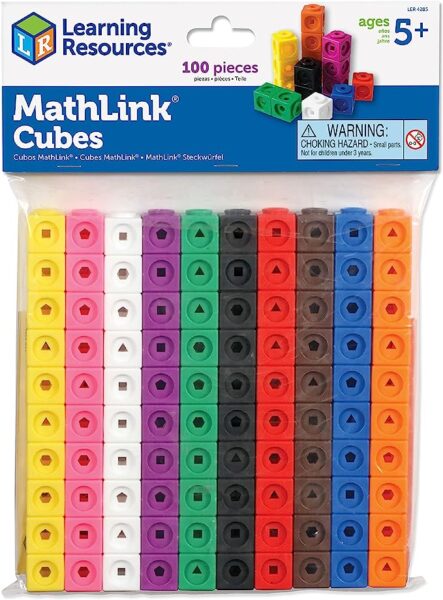
Mathlink Cubes or Multilink Cubes are plastic cubes that connect on multiple sides. They are great for making lines for adding. Mostly, I use them for making groups that represent multiplication. We practice skip counting the groups. Then we write the times table for the amount in each group. Multilink Cubes also help to show the inverse relationship between multiplication (putting the groups together) and division (connecting a pile of cubes into groups with the same amount).
Green and Red Counting Chips
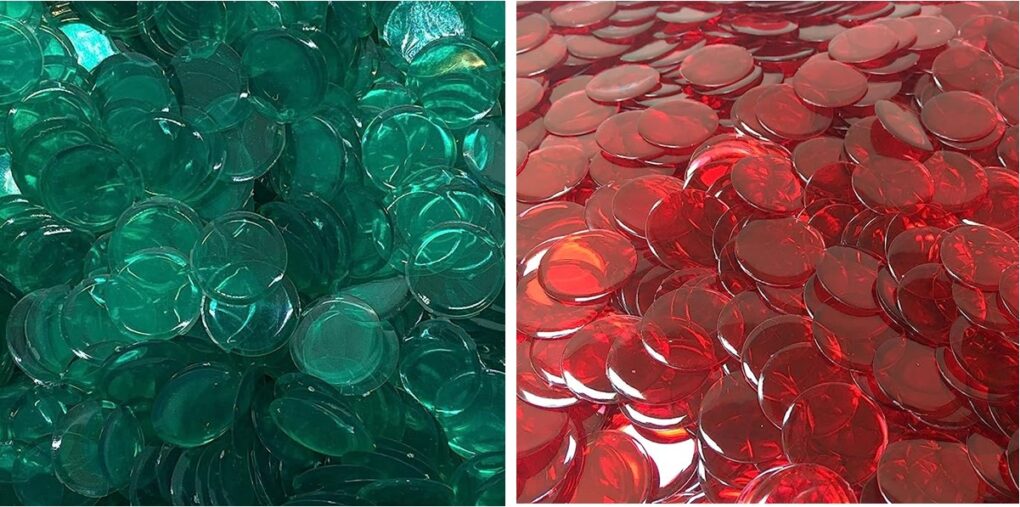
Red and Green Counting Chips help to show integers and the relationships of adding and subtracting positive and negative numbers. Green represents positive integers; red represents negative integers. We can show the cancellation of “making zeros” when the same amount of green and red chips are placed together.
Bucket Balance
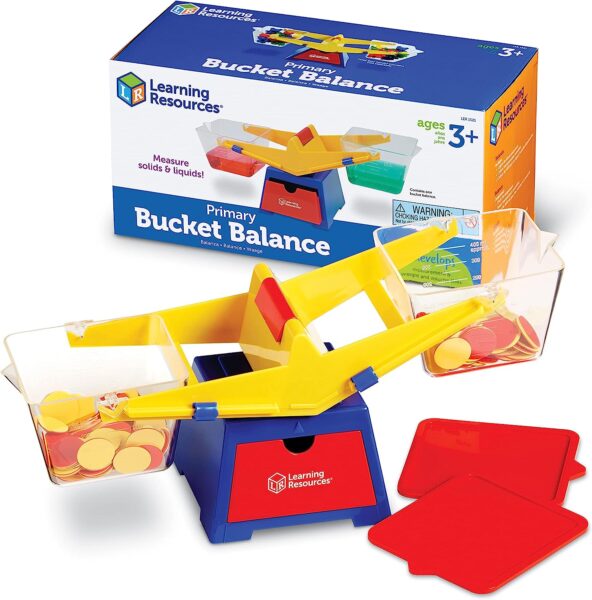
A Bucket Balance can be used with younger math students to show weight or mass and the concepts of equal, more, and less. A Bucket Balance is also good for showing liquid comparisons. Most of the time, I use a Bucket Balance to teach beginning algebra students how to logically think through the sequential process of solving basic equations. Turn the Bucket Balance around to demonstrate the commutative property. Use a post-it note or scrap of paper to show the variable or “mystery number.” I use the Green and Red Counting Chips for combining like terms and solving basic algebra equations.
Teaching Clocks
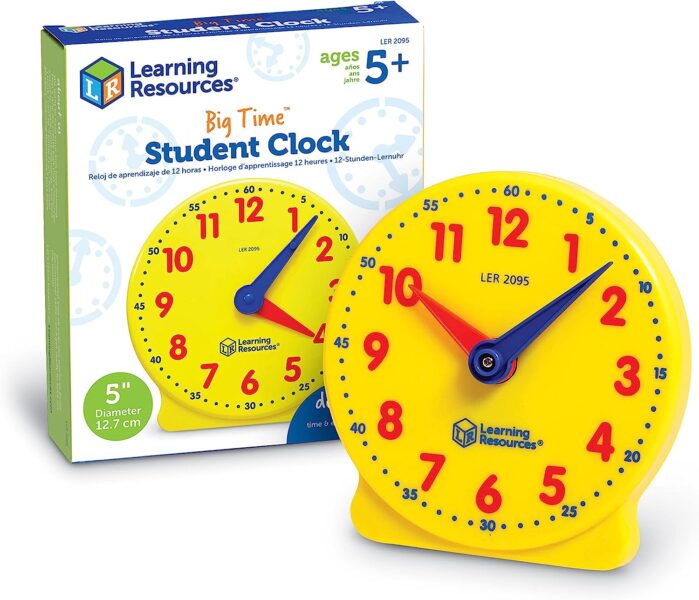
Manipulative clocks with moving hands help students learn and reinforce concepts of time, including reading and representing analog and digital time, elapsed time, and time conversions. Many variations of teaching clocks with the 5 minute increments marked can help kids tell time. I like the Judy Clock or the Learning Resource Teaching Clock to have kids learn to tell and set time on an analog clock. Of course, we practice the 5 multiplication facts on a clock also.
Money (Bills and Coins)
School practice money can be helpful in a homeschool; however, I have found that for kids with special needs, using real money is more motivating and generalizes to daily life more effectively. I used to teach coins first, then bills. With our inflated economy, I now teach bills first. For some of my students, I skip teaching coins and, instead work on rounding and counting only bills for change. For students who are able, I teach counting change with the counting up strategy, and connect it to the fill-the-gap subtraction concept.
Rulers and Measuring Cups
A Ruler is a must for teaching linear measurement skills. A Ruler also helps in teaching fractions. Measuring Cups help to show the relationships of capacity. Plus, cooking is a fun way to learn math skills!
Geoboard
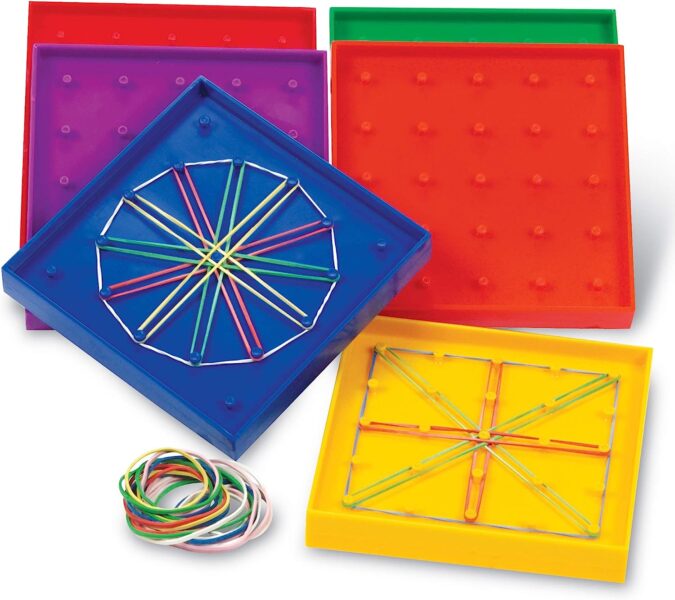
Geo-boards consist of a square grid with pegs and rubber bands. They enhance students’ understanding of shapes, angles, symmetry, and geometry concepts like perimeter, area, and coordinates. For kids who have visual-spatial challenges, a Geoboard can help with map reading skills also. GeoBoards, Dot Paper, and Graph Paper are all integrated tools that help younger students with gestalt drawings. For older students, a square Geoboard can help prepare for graphing linear equations in algebra and the concept of exponents. A circle Geoboard can help prepare for circle graphing and for radians in high school geometry.
These math manipulatives can carry your kids all the way from early childhood through high school level mathematics. There are other manipulatives that I use and like, such as a magnetic 10-Frame, Dominoes, Pentominoes, Tangrams, and more! The ones listed in this article are the manipulatives I use them most!
You can sometimes find used math manipulatives on your favorite online selling/buying platform. You can find individual manipulatives new according to your child’s age and curriculum. You may also purchase manipulatives kits. Be careful because often kits have additional manipulatives that aren’t necessary just to sell more product. Keep it simple and whatever manipulatives you decide to use, use them longer than you think should be necessary. Also, to ensure your child can succeed at the abstract stage, move through the two stages between concrete manipulatives and abstract numerals.
If you have questions about what manipulatives may help your child wtih a particular math skill, feel free to join our membership for on-going support in teaching your unique learner!
